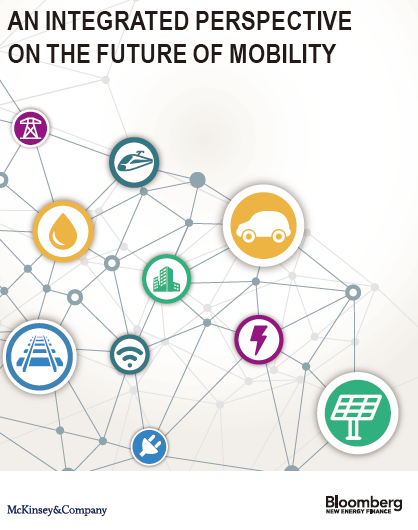- 经济管理
- 行业报告
- 企业管理与咨询报告
麦肯锡:移动技术的未来(英文 68页)

A number of social, economic, and technological trends will work together to disrupt mobility, potentially creating three new urban models by 2030.
To view a city from above is to observe a world in motion. Trains carry people to and from work; taxis circulate in abstract patterns; trucks deliver goods and carry away garbage; pedestrians hustle down city blocks; cyclists zip through traffic. Mobility is the lifeblood of our cities and essential for urban life.
Yet, our desire for mobility has consequences: cities can be noisy, congested, and prone to smog. Far too many urban residents spend hours stuck in traffic; no one can escape airborne pollution. Mobility is also a critical economic factor, both in its own right and as the means of providing the goods and services that are the foundation of economic life. Finally, mobility matters to people, whether this is getting to work or school with ease, visiting friends and relatives, or simply exploring one’s surroundings. In relatively few places, however, does the reality of what is available match the public’s aspirations for safe, clean, reliable, and affordable ways to get from A to B—and back again.
We believe, however, that the way people move around the urban environment is primed for dramatic change. Already, new business models, as illustrated by organizations such as Uber and Didi Chuxing, are changing traditional mobility patterns. Technological innovations in the form of electrification, connectivity, and autonomy are on the horizon. Increasing urbanization and the growth of “megacities” with more than ten million people provide the conditions for change.
What, then, will be the future of urban mobility? A new report, An integrated perspective on the future of mobility, a collaboration between Bloomberg New Energy Finance and McKinsey, seeks to answer that question. To do so, it explores how a number of existing social, economic, and technological trends will work together to disrupt mobility at the local level.
The result is a radically different future based around three models of advanced urban mobility that are achievable by 2030. Inevitably, individual cities will make different decisions, based on specific local conditions, and go in different directions—and, globally, mobility systems in 2030 will on average look very much like they do today.
Yet there is a cluster of some 50 urban areas that could lead the way toward one of the three advanced-mobility models. These areas have the potential to demonstrate the profound effects of mobility innovation on everything from power systems to the use of public space, while simultaneously introducing a new city dynamism.
The mobility systems of the future are likely to be very different from what exists in most of the world today. The individual traveler is at the heart of this evolution, so consumers will need to be open to adopting new technologies and services. However, both the public and private sectors will have roles to play in paving the way.
×所属专题: 麦肯锡下载《麦肯锡:移动技术的未来(英文 68页)》需 20点,包月包季包年会员(点此注册)免费下载。
一、非注册用户快速自助下载两步完成:1 注册(点此),2 购点卡(点此) 充值(点此)自主下载
二、非注册用户直接付款(点此付款),付款后短信(18121118831或加微信)告知题目或者Email,我们通过邮件发给您。需要帮助?专题跟踪研究报告
企业出海 新质生产力 低空经济 生成式AI 工业互联网 数字藏品 动力电池 ESG 数字化转型 机械零部件 氢能 碳中和 区块链 元宇宙 建筑 矿产 安永 数字货币 新基建 日化 案例分析 毕马威 贝恩咨询 普华永道 波士顿 罗兰贝格 德勤咨询 埃森哲 麦肯锡 电商 金融科技 人工智能 物联网 互联网金融 大数据 3D打印 食品饮料 家电行业 零售连锁 新能源 商业地产 快递行业 机械设备 汽车 核电 电子产业 电力行业 新兴产业 纺织服装 医药生物 广告传媒 金融投资 航空 旅游 酒业 能源 有色金属 通信 石油化工 物流供应链 房地产 可行性报告 PPP 商业计划书 五力分析 并购重组 发展战略 SWOT 产业链 钻石模型 价值链 PEST 人力资源 面板模型 stata 精华推荐 供应链金融 互联网+ 机器人 O2O 教育培训 论文资料查找 写作修改服务 EMBA论文写作 硕士论文 本科论文 论文写作每年为数千个企事业和个人提供专业化服务;量身定制你需要的行业分析的资料和报告
相信我们!企业客户遍及全球,提供政府部门、生产制造企业、物流企业、快消品行业专业化咨询服务;个人客户可以提供各类经济管理资料、商业计划、PPT、MBA/EMBA论文指导等。
点此填写您的需求15+年的经验,值得信赖
可以QQ联系我们:896161733;也可以电话:18121118831

